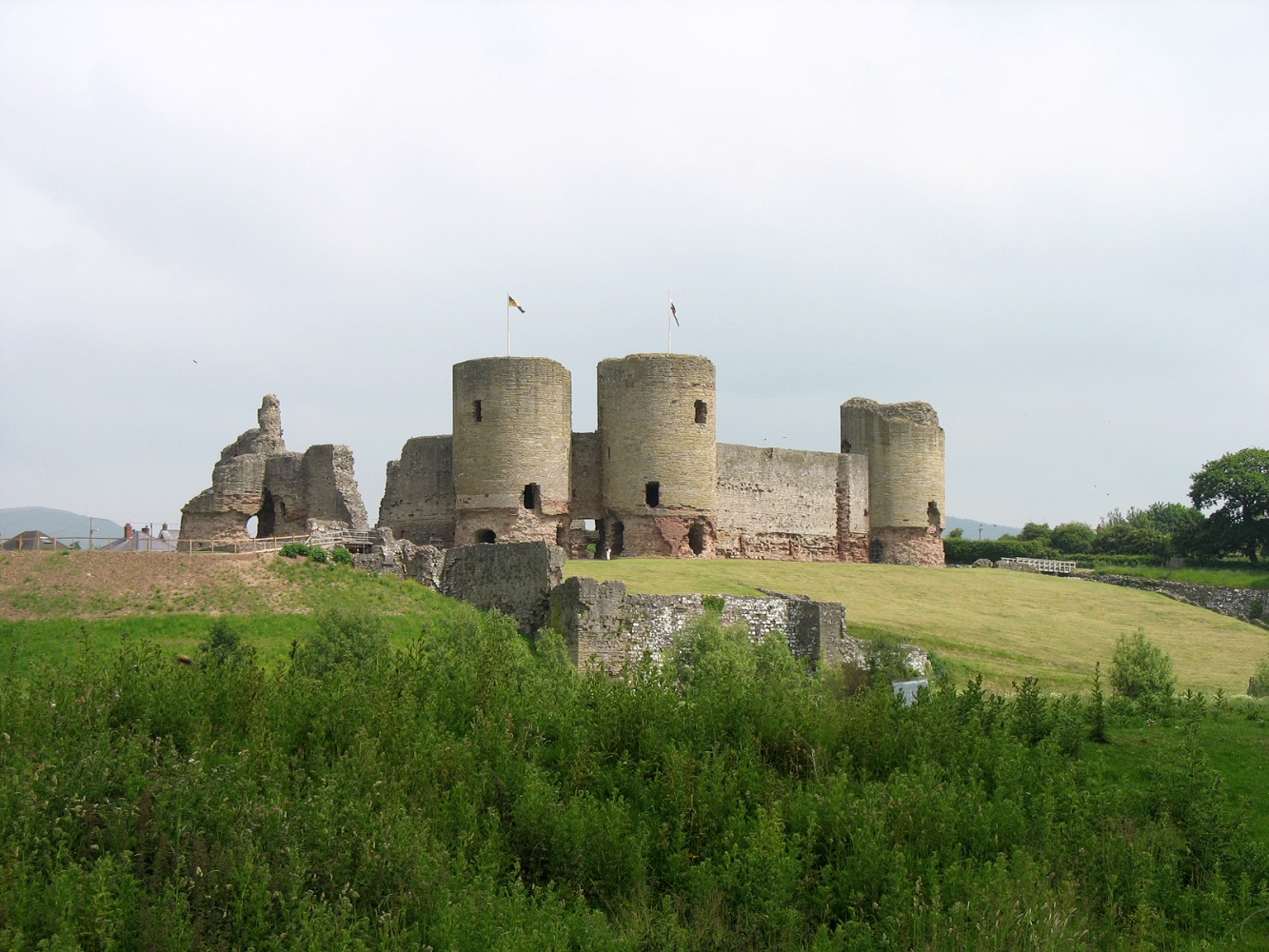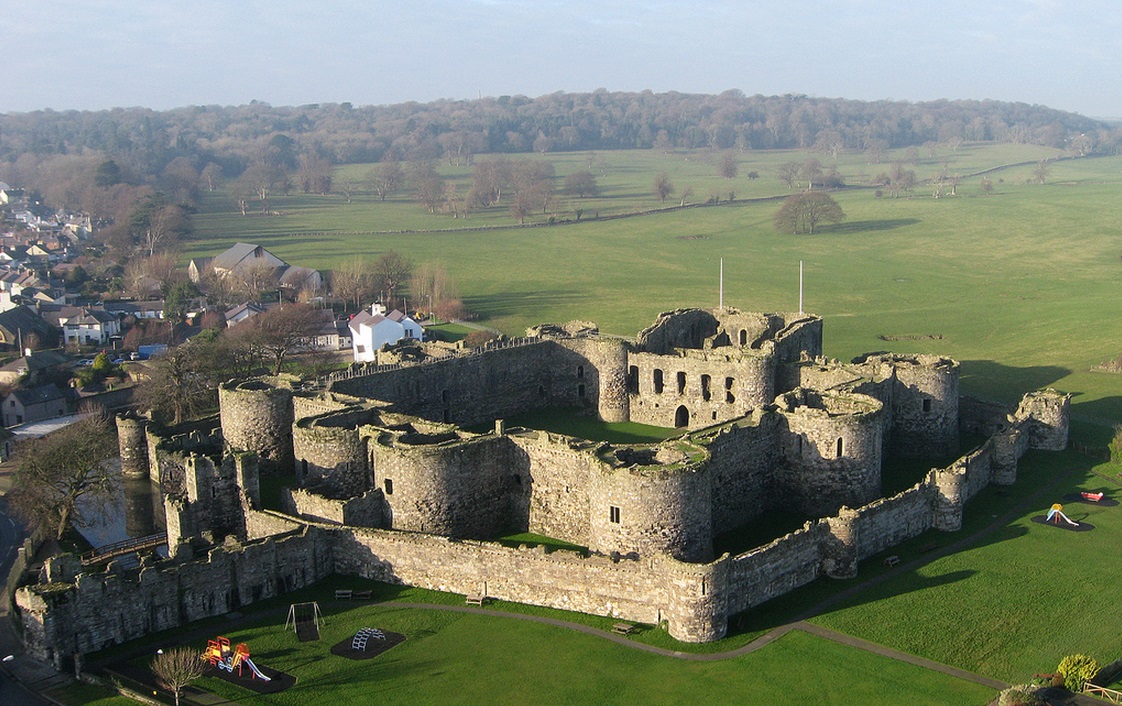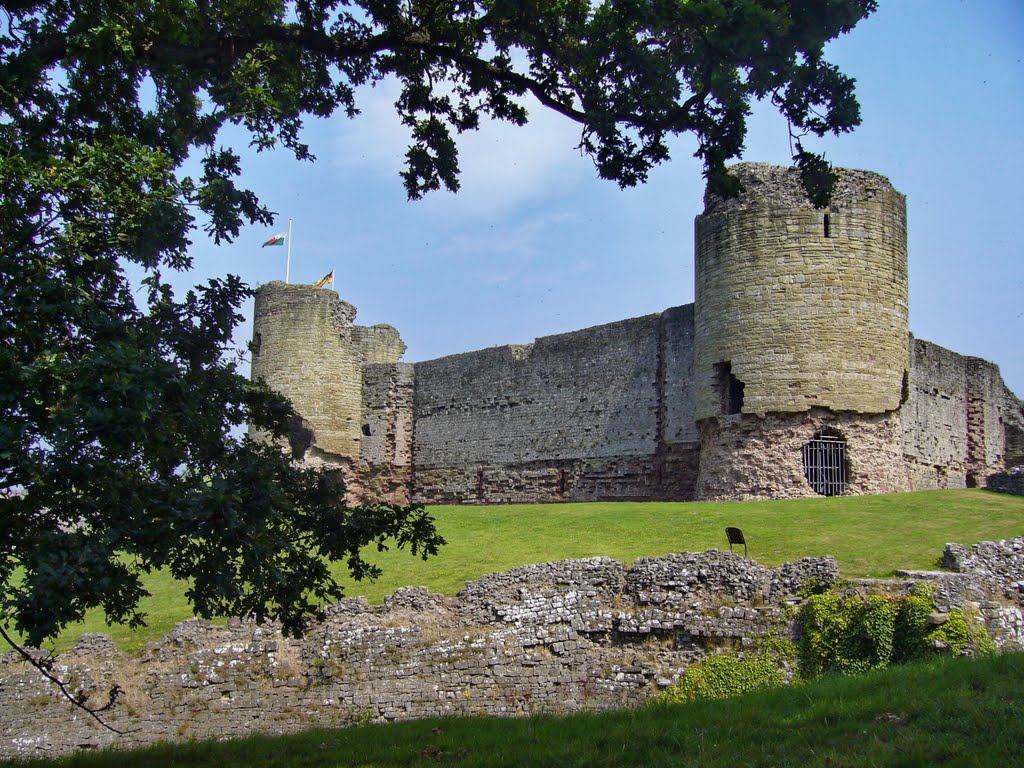Rhuddlan Castle is a castle located in Rhuddlan, Denbighshire, Wales. It was erected by Edward I in 1277 following the First Welsh War.
Construction
Rhuddlan was planned as a concentric castle. It has a unique 'diamond' in layout as the gatehouses are positioned at the corners of the square baileys instead of along the sides like at Flint, Harlech or Beaumaris.
The inner ward has defensive walls with twin-tower gatehouses. The outer ward is surrounded by a curtain wall that has small towers and turrets. The castle also had a dry moat to improve defence on its landward side. Within the inner ward there was a great hall, kitchens, private apartments and a chapel. The outer bailey had a granary, stables and a smithy.
Much of the work was overseen by master mason James of St George. Rhuddlan, which was not completed until 1282, was built concurrently with Flint Castle.
Rhuddlan is next to the River Clwyd. During the fortification's lengthy construction, the river course was straightened and dredged to allow ships to sail inland along a man-made channel. Its purpose was to allow provisions and troops to reach the castle even if hostile forces or a siege prevented overland travel.
History
The story of Rhuddlan goes back much further than the fortress built by Edward I. Prior to the Norman occupation of lower Gwynedd, Rhuddlan was at the heart of a Welsh cantref. From here the Lords of Rhuddlan commanded the lands of North East Wales (Welsh Perfeddwlad) on behalf of Gruffydd ap Llywelyn (1007 – 5 August 1063), the last ruler of all Wales.
But in the late 11th century, the Normans invaded Gwynedd. Rhuddlan was fought over by the Princes of Gwynedd and the Earls of Chester. The remains of a Norman castle at Twthill, built in 1086, is just to the south of the current castle.
In July 1277, at the outbreak of the Welsh Wars, Edward I left Chester and established an advance base at Flint, where building work immediately began on Flint Castle. With naval assistance from 25 ships of the Cinque Ports fleet, the army pushed along the coast. By August Edward had moved his forces onto Rhuddlan. Three months later it was ceded to the English Crown following the Treaty of Aberconwy between Llywelyn ap Gruffudd and Edward I.
Work on Rhuddlan Castle began immediately under the control of Master Bertram, a Gascon engineer, but construction was soon handed over to Savoyard master mason, James of St George who remained in charge until labour ceased in 1282. Edward I also created a new borough, north of his castle, away from the pre-existing Norman town and Dominican Friary. The 13th-century street layout can still be seen in the modern town. The borough, like at Flint, was defended with a pair of ditch-separated earthworks and a timber palisade.
Elizabeth the eighth daughter of Edward I was born at Rhuddlan in 1282, the same year work at the castle was completed. Two years later the Statute of Rhuddlan was signed at the castle following the defeat of Llewellyn the Last. It ceded all the lands of the former Welsh Princes to the English Crown and introduced English common law. Edward I could now appoint Royal officials such as sheriffs, constables, and bailiffs to collect taxes and enforce English law throughout Wales. Following Rhuddlan, the counties of north western North Wales were placed under the control of the Justiciar of North Wales. Although the statute brought in English legislation, Welsh law continued to be practised at local level after the conquest of the Wales. This remained the case until 1536 when Rhuddlan's statute was repealed by the Laws in Wales Acts 1535-1542 that made English common law the exclusive judicial system in Wales.
In 1294 the castle was attacked during the Welsh rising of Madog ap Llywelyn but was not taken. It was attacked again by forces of Owain Glyndŵr in 1400. This time the town was badly damaged but the castle held out. In the latter 15th and early 16th centuries the castle's condition deteriorated as its strategic and administrative importance waned.
Rhuddlan Castle was again garrisoned by Royalist troops during the English Civil War. It was taken by Parliamentary forces after a siege in 1646. Two years later Parliamentarians partially demolished the castle to prevent any further military use.












